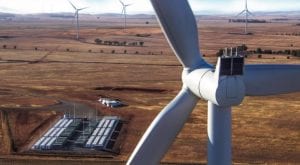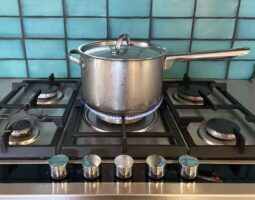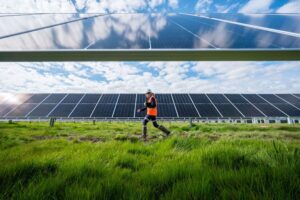Victoria and Tasmania are to receive specific allocations in Australia’s biggest ever renewable energy tender, while the capacity of wind and solar projects in coal-dependent NSW will be capped, according to new details of the soon-to-be-launched program.
As predicted by Victoria energy minister Lily D’Ambrosio in last week’s episode of Renew Economy’s Energy Insiders podcast, Victoria has negotiated a share of the six gigawatts of wind and solar contracts that will be auctioned in the first stage of the Capacity Investment Scheme.
The CIS will seek a total of 32 GW of renewable and storage capacity over the next few years, and is the main policy driver for investment to help the federal government reach its ambitious target of 82 per cent renewable energy in the electricity grid by 2030. Current investment patterns have fallen well behind the pace.
Victoria will receive an allocation of 1.4 GW and Tasmania 300 MW under the new agreement announced on Friday, adding to the 2.2 GW that had previously been allocated to NSW, 300 MW to South Australia and 500 MW to Western Australia.
That leaves Queensland as the only state without a specific allocation, although the remaining 1.8 GW will go to wherever the next best bids are made.
However, the allocation for NSW, which is desperate for new capacity as it faces the retirement of the country’s biggest coal fleet over the next decade, will be capped at a maximum of 3.7 GW in this first tender.

Details of the tender program released by the federal department of climate and energy reveal that the government will pay 90 per cent of any revenue shortfall under an agreed floor, but will receive half of any revenues above an agreed cap.
Interestingly, projects will retain negative price risk, and wholesale market prices below zero will be deemed at zero for net operational revenue calculations. “This mitigates the risk of uneconomic dispatch of generation,” the document says. “Projects retain incentives to enter wholesale contracts to manage negative price risk.”
Eligibility in the CIS is restricted to projects not identified as committed or existing in the AEMO generation information page before January 29, 2024. The one exemption is for projects in NSW, where the eligibility is backdated to November 14, 2019.
Registration of bids for the tender open on May 16, first bids open on May 31, with the final winners to be announced in December. This is the first of a series of planned six-monthly auctions.
“We are in the middle of a very significant transformation, we’re moving our energy system from 30 per cent renewables when we came to office, to 82 per cent renewables by 2030, we’re on track to do that,” federal climate and energy minister Chris Bowen told ABC Melbourne on Friday.
“The announcement today is a very big part of doing that, the biggest single auction supporting renewable energy in Australian history.”
Bowen, who also flagged a likely deal with Victoria and Tasmania in his interview on Energy Insiders a week earlier, also defended the highly criticised gas strategy released by Labor resources minister Madeleine King on Thursday, saying it was more of a position paper, and did not reflect any major government investment.
“What it flagged was issues that the country and the economy with Government’s guidance needs to address. That is not a flag of big government investment coming in gas,” he said.
Labor has defended the use gas as highly preferable to the Coalition push for nuclear power.
“Peter Dutton’s plan to rip up renewable contracts and wait 15 years to build nuclear at enormous cost to taxpayers is risky for Australia and does nothing to help households and businesses now,” Bowen said in an earlier statement
D’Ambrosio said Victoria, which has a 95 per cent renewable target for 2035, which will require then closure of the last of its three brown coal generator, has been doing the “heavy lifting” to drive more cheap renewables into the grid.
Tasmania energy minister Nick Duigan said the state had some of the best renewable energy resources in the world.
“We have a strong renewable energy past, with the CIS assisting to drive our renewable energy future to meet our growing demand and make a meaningful contribution to the national energy transition.
“I look forward to working with the Australian Government to finalise the agreement of the CIS in Tasman










